|
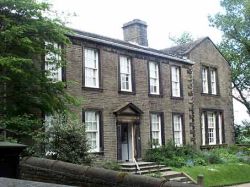
Haworth, an attractive village in West Yorkshire, is in an
area often called Bronte country because of its association with the Bronte authors - Emily Bronte, Charlotte Bronte and Anne
Bronte. The family moved to the Haworth parsonage in 1820, (picture one), which is now the Bronte Parsonage Museum. Picture
two shows the main street with the Black Bull public house on the right, a regular drinking haunt of Branwell, their brother.
The two following photographs are the apothecary where Branwell Bronte bought his opium. Branwell was an alcoholic and an
opium addict, addictions that ultimately led to his death at the age of 31.
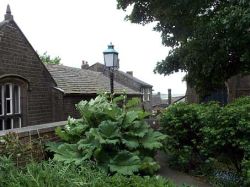
|
| Village School |
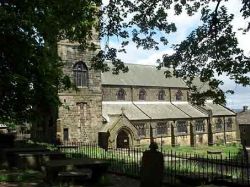
|
| Haworth Church |
The village stocks are to the right of the steps leading to
the parish church (the Church of St. Michael and All Angels) where the Brontes' father, Patrick, was the curate. The Bronte
family are not buried in the churchyard but in a vault beneath the church itself. Anne Bronte, the youngest of the three sisters,
died in Scarborough and is buried in St. Mary's churchyard, overlooking the sea. All died of tuberculosis at a young age.
Charlotte (1816-1855) was 38, Emily (1818-1848) died aged 30, and Anne was only 29 when she died in 1849. Patrick outlived
all his family and died in 1861 at the age of 84. There were three other children in the family apart from the famous authors
- Maria 1814-1825, Elizabeth 1815-1825 and his only son, Branwell 1817-1848.
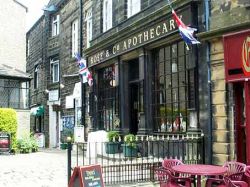
|
| Haworth Apothecary |
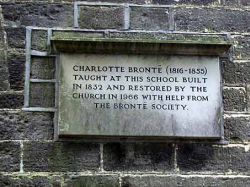
|
| Plaque School |
Charlotte Bronte taught at the village school, next to the
parish church. The plaque on the school wall commemorates this. The last two photographs are of Haworth's cobbled street.
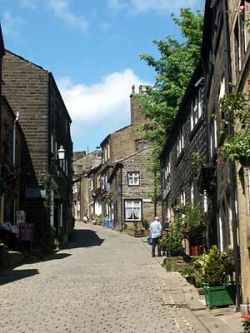
|
| Haworth Main Street |
The three sisters wrote under pseudonyms of Currer Bell (Charlotte
Bronte) Ellis Bell (Emily Bronte) and Acton Bell (Anne Bronte) to disguise their femininity and to get their works into print.
Branwell was also a writer, but his work has been overshadowed by that of his sisters.
Charlotte's most remembered novel is Jane Eyre. Emily wrote
Wuthering Heights, and Anne, the youngest of the three was the author of The Tenant of Wildfell Hall.
The ruins of Wycoller
Hall near Burnley, Lancashire, are thought to be the inspiration for Ferndean Manor in Charlotte's novel, Jane Eyre. Top Withins
has associations with Emily Bronte's Wuthering Heights.
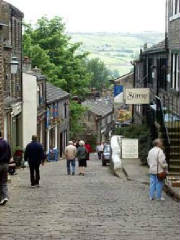
|
| Haworth Main Street |
Haworth 1820 - 1861
Haworth, 800 feet high in the Pennines, was a crowded industrial
township during the Brontė period.The population increased by 118 percent between 1801 and 1851 to 3,365. There were no sewers
and the water supply was both polluted and inadequate. contributing to a high mortality rate.
There were 1,344 burials in the church yard between 1840 and
1850 and the average age at death was 25 years; 41 percent of babies died before reaching their sixth birthday.
Against the mortality figures the Brontė deaths, though tragic,
were unremarkable.
Subsistence farming of a few acres, often 'take-in' from the
moors, was combined with hand-loom weaving or wool combing. This domestic system of worsted manufacture was changing to factory
production with water powered machinery. The mills built from 1790 along the river worth were well established when the Brontė
family arrived.
Other occcupations included quarying, building and crafts but
there were scarcely any professional people
Baptist and Weslyan chapels flourished and together with the
church, provided the village with education and a focus for social life.
|

